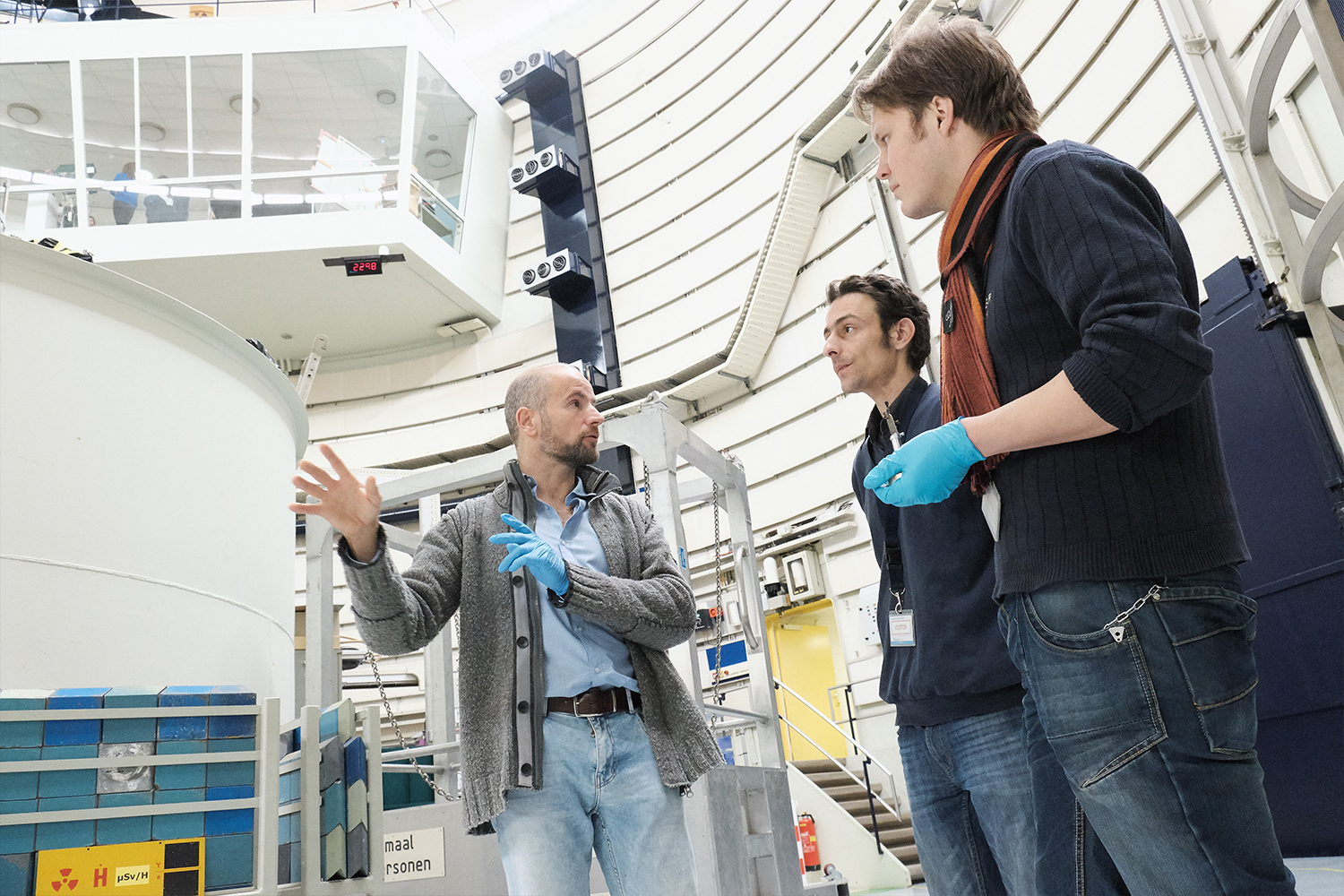Was Antoni van Leeuwenhoek hiding something? His method of producing lenses may have been copied, assert historian Tiemen Cocquyt and TU Delft researchers in Science Advances.
Visiting the Reactor Institute where techniques are developed to investigate old objects using neutron beams. From left to right: Lambert van Eijck, Tiemen Cocquyt and restorer Auke Gerrits. (Photo: Cocquyt)
Antoni van Leeuwenhoek (1632-1723) is known as the ‘father of microbiology’. Rightly so, says Tiemen Cocquyt, Curator at the Rijksmuseum Boerhaave. “He was the first to observe single celled organisms through his microscopes and his instruments were unequalled for 150 years.”
And yet, something is amiss. Did Van Leeuwenhoek make the lenses for his microscopes entirely by himself, or did he copy them? This has been the subject of speculation for a long time.
Cocquyt and scientists at the Reactor Institute Delft shone a light through a microscope using a neutron beam to examine a lens of Van Leeuwenhoek closely. The microscope they examined was one at the University Museum Utrecht that Van Leeuwenhoek used for pioneering research. The results are described in the journal Science Advances this week.
Why do this research?
“After 350 years, Van Leeuwenhoek’s microscopes have still not revealed their secrets. Van Leeuwenhoek never explained how he made his lenses. He entered science late in life. Before that, he was a cloth merchant. He wanted to make a name at the Royal Society in London and kept his methodologies, understandably, a secret.
The usual method at the time was to grind lenses, but it was discovered that it was a lot easier to melt glass. By holding a thin glass stick in a fire, the end curled up into a ball which then broke off the stick. This method was developed by the Brit Robert Hooke. But Van Leeuwenhoek’s lenses were so much better than all the other lenses at the time that people assumed that he processed them in a different way. There are a few articles in which Van Leeuwenhoek plays to those assumptions, by alluding to a glass blowing technique for example. Hooke was very interested in Van Leeuwenhoek’s ‘secret’ method and asked about it several times in vain.”
‘The fact remains that Van Leeuwenhoek was the first to describe the microscopic world’
What did your study reveal?
“The hypothesis was that the microscope contains an advanced, blown glass ball which would explain the high performance. However, Van Leeuwenhoek did not use a different production technique at all. We could see this in the shape of the lens. He just refined the existing technique. It is ironic. It is conceivable that Van Leeuwenhoek copied Hooke, the man that was so much impressed by the Dutchman’s ‘new technique’.”
In the article you write ‘Van Leeuwenhoek was far from the isolated scholar he is often claimed to be; rather, his secrecy about his lenses was motivated by an attempt to conceal his indebtedness to Hooke.’ Should we then not call Hooke the ‘father of microbiology’ then?
“No. The fact remains that Van Leeuwenhoek was the first to describe the microscopic world. He refined the existing technique and got the most out of it. In doing so, he left his competitors far behind.”
The neutron beam (neutron tomography) research methodology to investigate objects has borne fruit. Do you want to do more of this?
“It was a very fruitful collaboration. Dr Lambert van Eijck of the Neutron & Positron Methods for Materials Research Group (Applied Sciences) and his colleagues developed the method. In line with an NWO Investment Grant Large, he went looking for historic cultural objects for which he felt neutron tomography would deliver unique information. He asked if the Rijksmuseum Boerhaave had any ideas and I suggested the microscope. We certainly would like to do more. I would like to examine many more microscopes. The neutron facility at TU Delft offers valuable opportunities for historic cultural research.”
Do you have a question or comment about this article?
tomas.vandijk@tudelft.nl


Comments are closed.